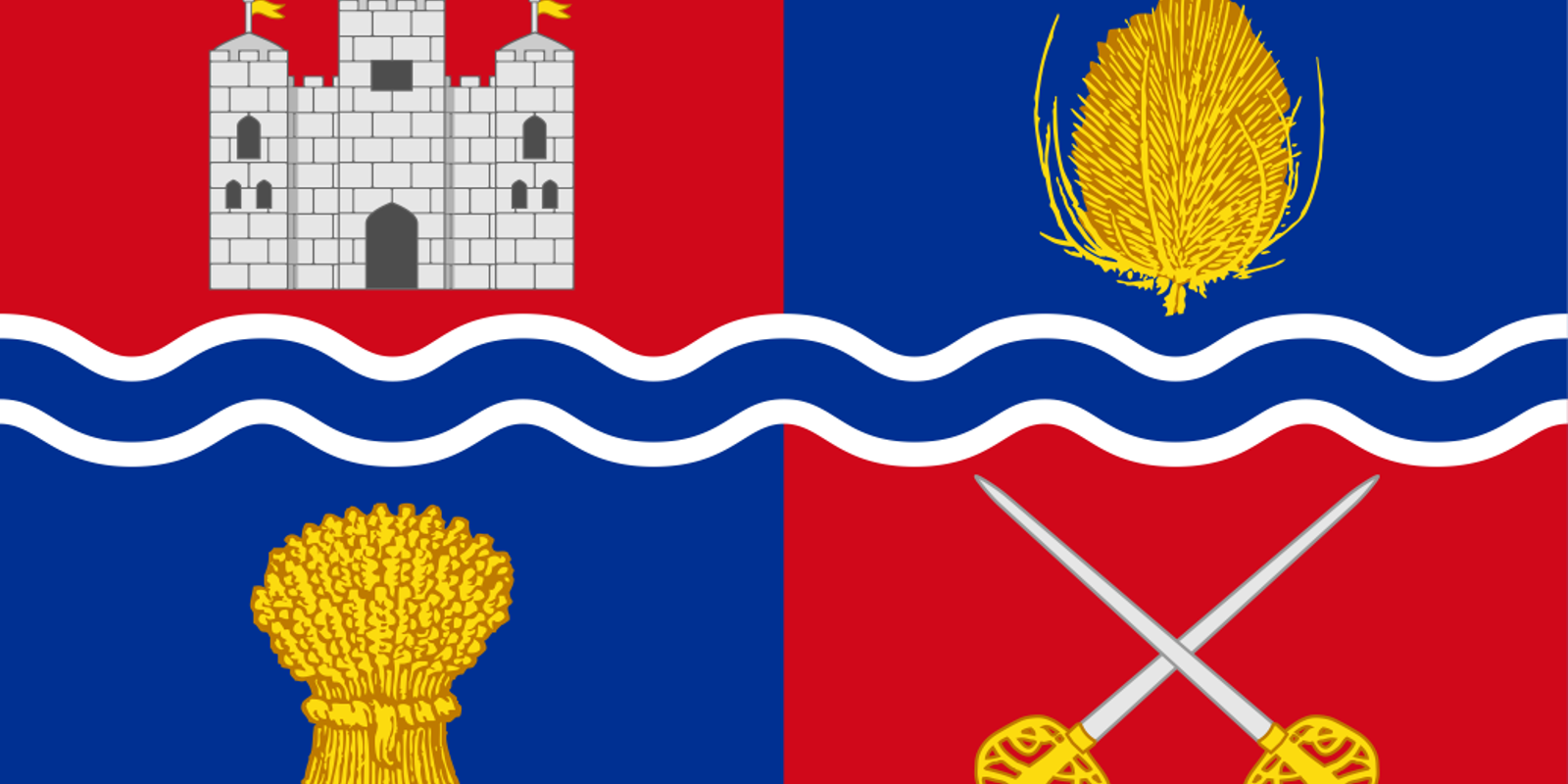
Newbury Town Flag
The Newbury Town Flag originated from the Newbury Town Flag Working Group, which was formed in response to a request from Newbury’s twin town, Braunfels in Germany, to create a flag representing Newbury.
As the 50th anniversary of the towns' twinning approached, the Mayor of Braunfels asked the Mayor of Newbury for an exchange of town flags to mark the occasion. However, Newbury did not have an official flag at the time. In response, the Town Flag Working Group was established to design one. This flag is now the official Newbury Town Flag and is flown from the Town Hall flagpole.
The flag was first flown from the Town Hall flagpole on Sunday 14th July 2013, on the day of the Newbury Carnival. As well as this, over 1500 handheld paper flags were distributed to the crowds at the carnival.
A specially commissioned copy of the flag was gifted to the Mayor of Braunfels on the 21st September 2013 in preparations for the twinning anniversary celebrations.
To make a Flag Flying request, please click below to find information on Newbury Town Council's Flag Flying Policy
Flag Flying Policy
Details of the Flag
The flag is divided into 4 quadrants, and each quadrant represents ether emblems that have been used for many centuries or that symbolise important periods in the Town's history.
The top left quadrant contains Newbury Castle, not Donnington Castle as many believe it to be, adapted as the emblem of Newbury in 1599. It's reported to have been besieged by King Stephen in 1152AD. While the exact location of Newbury Castle was unknown, it was suggested that it may have been in the Wharf area of the town.
The top right quadrant is a teasel to represent the town's significance in the cloth industry. In the 16th Century, John Winchcombe (who was one of England's 'most considerable clother') used teasels for combing and teasing wool. Winchcombe woollen cloth was renowned across Europe for its high quality.
The bottom left quadrant is a sheaf of corn to represent the rich agricultural history of the town. Large amounts of corn were traded throughout the 19th Century. The sheer volumes for grains were so high that the Corn Exchange was built and opened in 1862 to handle to large amount of business the town received.
The bottom right quadrant contains two crossed swords to represent the two battles of Newbury in the Civil War. The first in 1643AD around Wash Common and Enbourne, the second in 1644AD which commenced in Shaw & Speen. Both battles were significant victories for the Parliamentarians during the course of the war.
Across the centre runs a wavy blue line which represents the Rive Kennet which flows through the town. Newbury was an important crossing point of the river, and more recently the Kennet and Avon Canal is a popular spot for locals and tourists.
The Newbury Town Flag Working Group members included Cllr Gabrielle McGarvey (Chair of Civic Pride, Arts & Leisure), Cllr Arthur Johnson (outgoing Mayor), Cllr Anthony Pick (incoming Mayor), Cllr Catherine Kent (incoming Mayoress), Cllr Jo Day (Vice Chair of Civic Pride, Arts & Leisure and incoming Deputy Mayor), Cllr Phil Barnett (ex-Mayor) and Joyce Lewis (Civic Manager). Other members of the community involved include Dr David Peacock (local historian), Bella Davies (local A Level student who drew up initial designs), Rod Thomason (Town Council Mace Bearer & Keeper of the Flags at St Nicolas Church) and Graham Bartram (Chief Vexillologist at the Flag Institute).